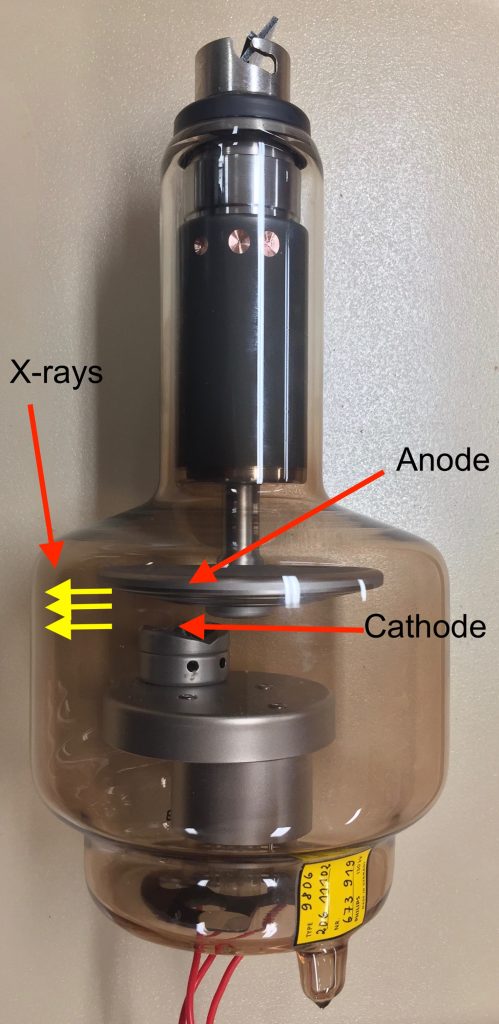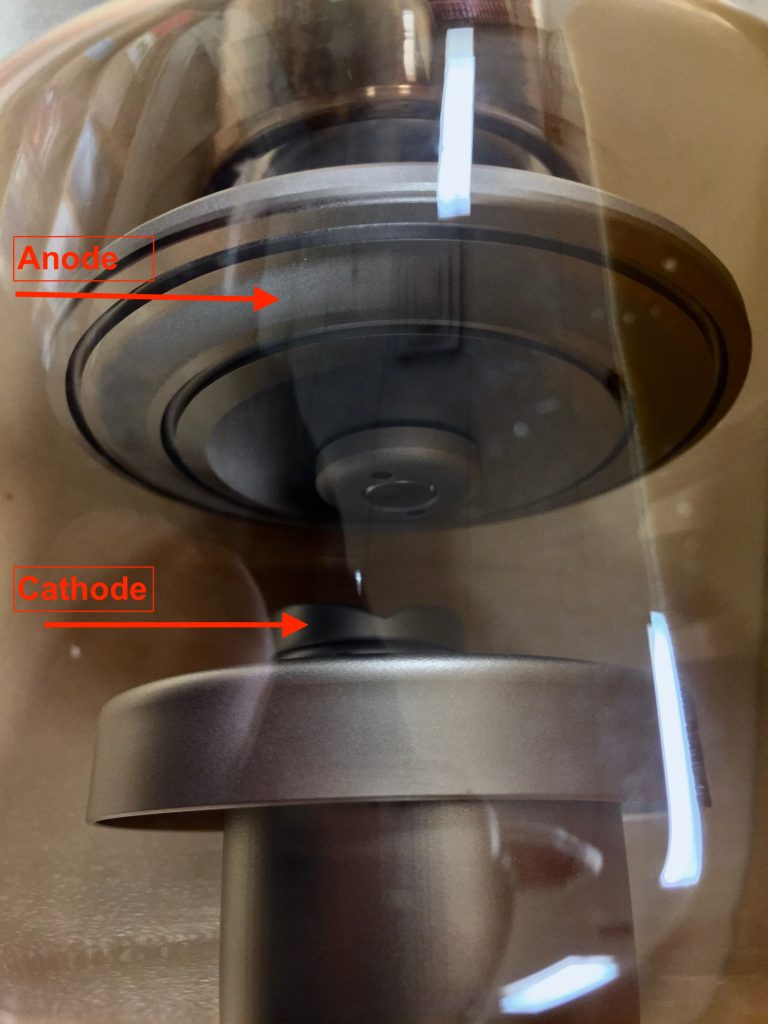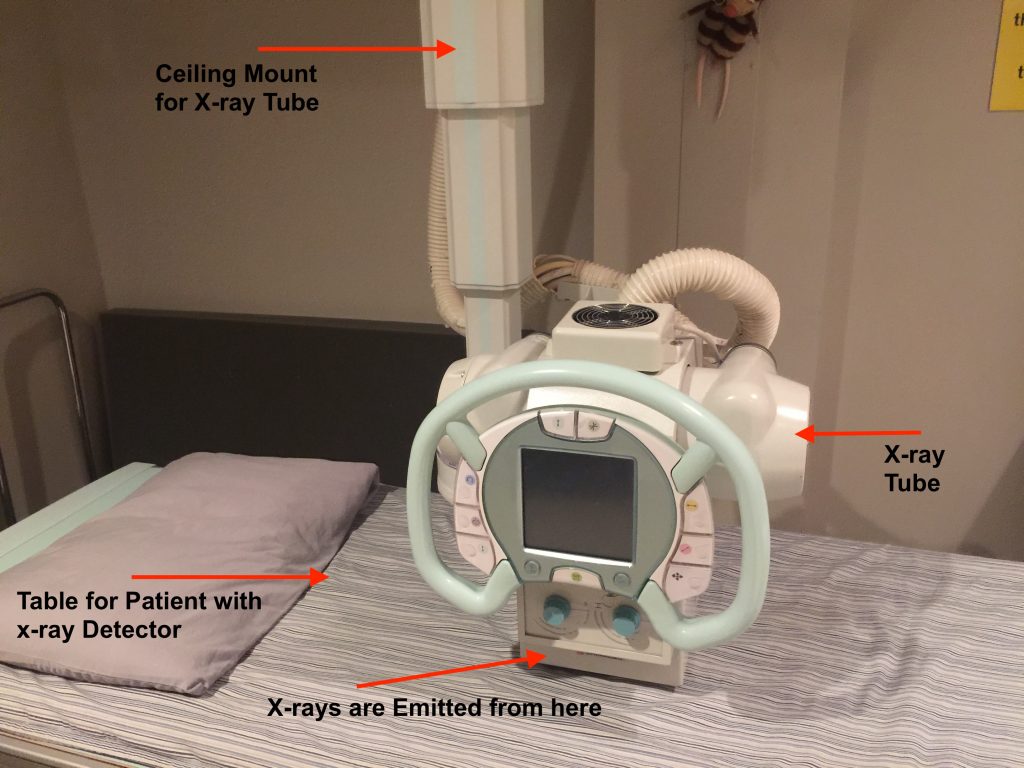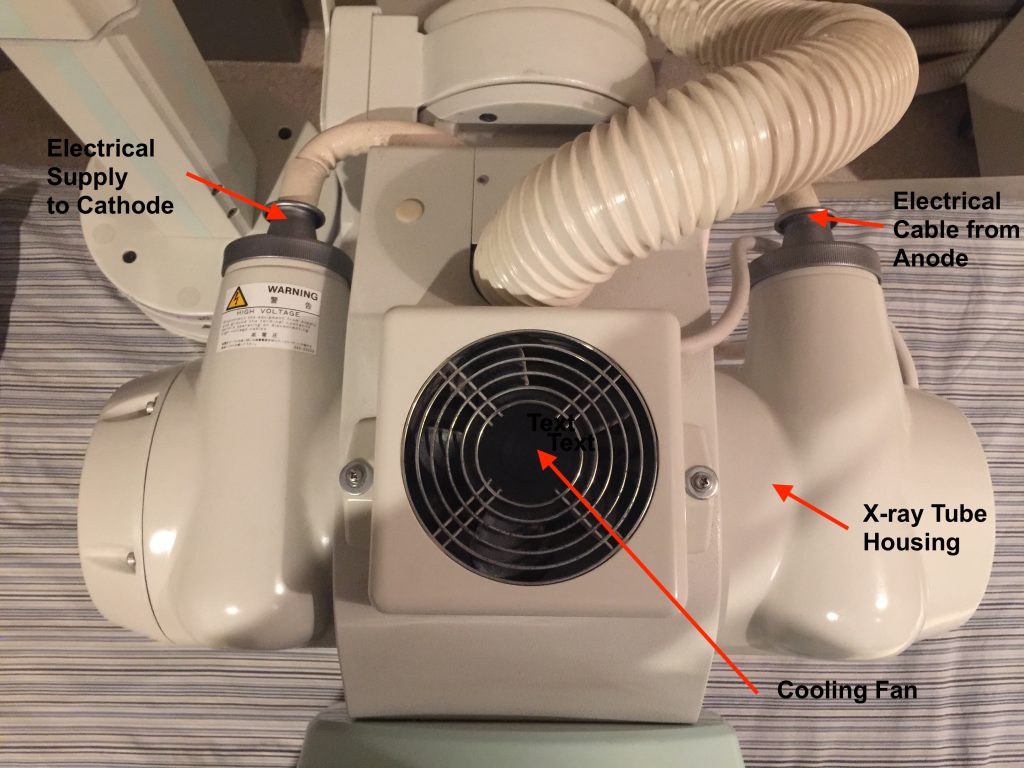9
The X-ray Tube:
X-ray tubes are found in a wide variety of imaging devices (computed tomography – CT, portable x-ray machines, mammography machine, fixed position x-ray machines, fluoroscopy units, and c-arm x-ray machines).
Medical x-rays are produced in a glass enclosed vacuum tube. (See Figure 2.1 and 2.2) A high voltage differential is applied across a gap in a vacuum tube between a cathode and an anode. The anode is the target for the electrons that are accelerated across the vacuum and the anode is usually made of a metal, often tungsten. When the voltage differential results in an electron crossing over the gap and impacting the metallic anode the electron slows down and liberates energy as heat and x-rays. The majority of the energy is liberated as heat. This type of interaction that results in x-ray generation, has been called by the “braking of the electron”, the bremsstrahlung effect.

Fig 2.1) This image demonstrates a full-length view of a glass x-ray tube with the cathode and anode illustrated.

Fig 2.2) This magnified image focuses upon the relationship between the cathode and the anode.
X-ray tubes are usually associated with apparatus that allows for the physical positioning of a patient for an examination and an x-ray detection system that collects transmitted x-rays and transforms them into images. (Figure 2.3)

Fig. 2.3) A ceiling mounted x-ray tube is seen. The x-rays are collimated and emitted from the end of the housing that is resting on the x-ray table. The x-ray detector is below the surface of the table.
The x-ray tube has physical features that allow for the cooling of the components related to the heat produced and for focusing and directing of the x-rays towards the target (the patient). The x-rays created are collimated by the lead housing of the x-ray tube and by mobile metallic plates in the x-ray tube which results in the x-rays being emitted from a small aperture in the x-ray tube housing. (Figure 2.4)

Fig. 2.4) This is an overhead view of the same x-ray tube seen in Figure 2.3. The electrical cables associated with the cathode and the anode are seen. The glass x-ray tube is inside the lead housing. The cooling fan is seen projecting from the top of the x-ray tube housing.
The x-rays emitted from the x-ray tube have three possible fates when encountering human anatomy:
a) They are transmitted through the patient to interact with the x-ray detector on the opposite side of the entry site, resulting in an image;
b) They are absorbed by the patient’s tissues and the energy is dissipated;
c) They are scattered by the patient’s tissues and leave the body in another direction from the entry site. These scattered x-rays may interact with the detector or they may enter the physical space surrounding the patient.
Different tissues absorb x-rays differently based upon their molecular structure i.e. bone vs. fat and upon the density and the thickness of the tissue. This differential absorption of the incident x-ray beam results in the differential detection of the x-ray beam after exposure of the detector and hence is directly responsible for the varying intensities seen on the gray scale of the resulting image.
Attributions
Fig. 2.1 – Full-length view of a glass x-ray tube with the cathode and anode by Dr. Brent Burbridge MD, FRCPC, University Medical Imaging Consultants, College of Medicine, University of Saskatchewan is used under a CC-BY-NC-SA 4.0 license.
Fig 2.2 – Magnified image focuses upon the relationship between the cathode and the anode by Dr. Brent Burbridge MD, FRCPC, University Medical Imaging Consultants, College of Medicine, University of Saskatchewan is used under a CC-BY-NC-SA 4.0 license.
Fig 2.3 – A ceiling mounted x-ray tube by Dr. Brent Burbridge MD, FRCPC, University Medical Imaging Consultants, College of Medicine, University of Saskatchewan is used under a CC-BY-NC-SA 4.0 license.
Fig. 2.4 – overhead view of the same x-ray tube seen in Figure 2A by Dr. Brent Burbridge MD, FRCPC, University Medical Imaging Consultants, College of Medicine, University of Saskatchewan is used under a CC-BY-NC-SA 4.0 license.
